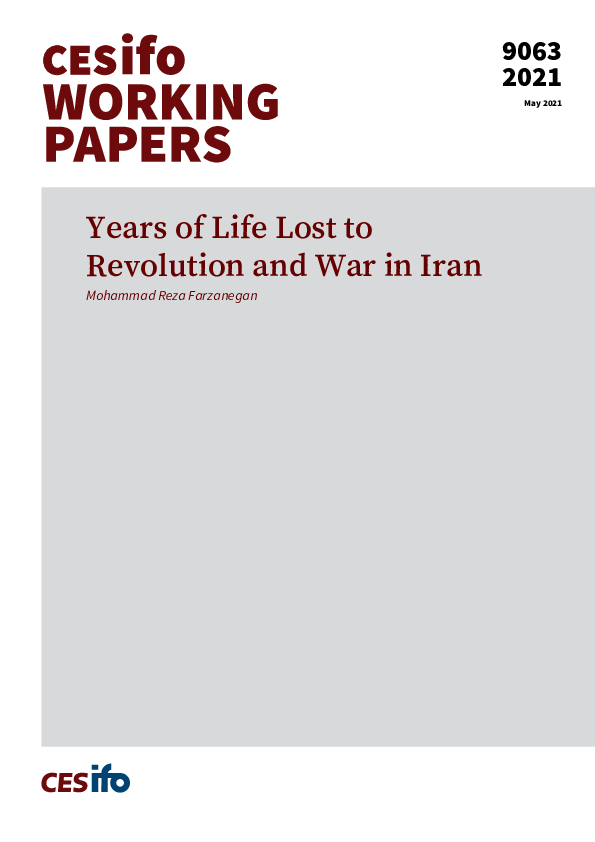Years of Life Lost to Revolution and War in Iran
CESifo, Munich, 2021
CESifo Working Paper No. 9063

This study examines the causal joint effect of a new political regime and war against Iraq on life expectancy of Iranians for the period 1978–1988 during the revolution and war. I use a synthetic control approach to construct a synthetic Iran based on a weighted average of other Middle East and North Africa (‘MENA’) and Organization of the Petroleum Exporting (‘OPEC’) countries. The synthetic Iran matches the average level of key pre-revolution life expectancy correlates and the evolution of the factual Iranian life expectancy during the post-revolution period through the end of the war. I find a sizable negative effect of the joint treatment. The results show that in total, an average Iranian has lost an accumulated 62 years of life during the post-revolution period until the end of war with Iraq in 1988. The average annual years of life lost is approximately six years. In other words, in the absence of the revolution and war, an average Iranian’s life expectancy could be approximately six years longer.
Public Choice
Empirical and Theoretical Methods